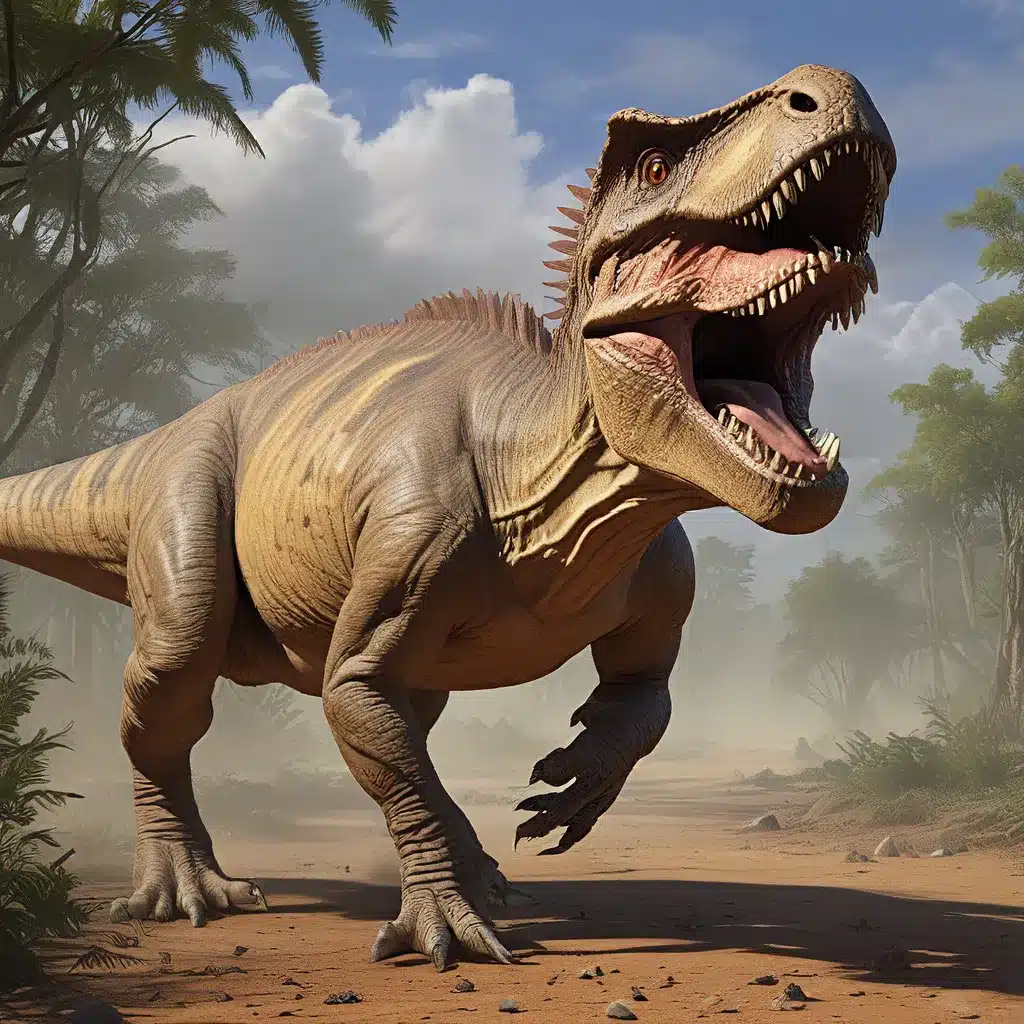
Uncovering the Ancestral Roots of Dinosaurs
Recent advancements in molecular analysis and paleontological research have shed new light on the evolutionary relationships between dinosaurs and their modern-day descendants. By studying the preserved protein sequences within ancient fossils, scientists have been able to establish a clearer understanding of the phylogenetic connections between non-avian dinosaurs and their living counterparts.
One groundbreaking discovery was the molecular analysis of a 68-million-year-old Tyrannosaurus rex protein sample, which confirmed the evolutionary link between dinosaurs and modern birds. According to a study published in the journal Science, the collagen protein sequences from the T. rex fossil were found to group more closely with those of chickens, ostriches, and other birds, rather than with modern reptiles like alligators and lizards.
This remarkable finding provides the first molecular evidence for the long-hypothesized evolutionary relationship between dinosaurs and birds. While scientists had previously relied on skeletal similarities to make this connection, the ability to directly compare ancient protein data has solidified the theory that birds are, in fact, the living descendants of certain dinosaur lineages.
Tracing the Evolutionary Pathways
The evolutionary lineage of dinosaurs is a complex and fascinating topic that has captivated the minds of paleontologists and enthusiasts alike. By carefully examining the fossil record and analyzing the relationships between various dinosaur species, researchers have been able to piece together the intricate web of evolutionary connections that gave rise to the diverse array of creatures we know today.
One intriguing example of this can be seen in the relationship between Styracosaurus and Triceratops, two iconic horned dinosaurs from the Cretaceous period. According to discussions on the r/Paleontology subreddit, while these two species may seem quite different at first glance, they are actually believed to be part of the same evolutionary lineage, with Styracosaurus representing an earlier, more primitive form of the ceratopsian family tree.
By tracing the gradual morphological changes and adaptations that occurred over millions of years, paleontologists have been able to establish these kinds of ancestral relationships between various dinosaur species. This not only helps us understand the evolutionary history of these remarkable creatures but also provides valuable insights into the broader patterns of life on our planet.
Bridging the Gap: Dinosaurs and Modern Creatures
The discovery of the evolutionary link between dinosaurs and modern birds has had far-reaching implications for our understanding of the natural world. Beyond simply confirming the shared ancestry, this finding has also shed light on the remarkable adaptations and transformations that have occurred over the course of millions of years.
For example, the transition from the large, powerful, and fearsome dinosaurs to the smaller, more agile, and often airborne birds has been a subject of intense fascination. As discussed on the r/askscience subreddit, the evolutionary path from non-avian dinosaurs to the diverse array of modern bird species is not a simple, linear progression, but rather a complex web of adaptations and branching lineages.
Through the study of fossil remains, molecular evidence, and comparative anatomy, researchers have been able to trace the gradual transformations that occurred, from the feathered, winged dinosaurs of the Jurassic period to the highly specialized and diverse bird species we see today. This wealth of knowledge not only satisfies our innate curiosity about the past but also provides valuable insights into the resilience and adaptability of life on our planet.
Unlocking the Secrets of the Past
The ongoing exploration and analysis of ancient dinosaur fossils continue to yield remarkable discoveries that expand our understanding of these enigmatic creatures and their place in the grand scheme of life. From the analysis of preserved proteins to the meticulous examination of skeletal remains, each new finding adds another piece to the puzzle of the dinosaur’s evolutionary legacy.
One such example is the recent research on the evolutionary relationship between mastodons and modern elephants. According to the Harvard Gazette article, the analysis of 160,000- to 600,000-year-old collagen protein sequences derived from mastodon bone has provided molecular evidence for the close phylogenetic relationship between this extinct species and its modern elephant counterparts.
This discovery, along with the insights gained from the T. rex protein analysis, demonstrates the power of cutting-edge scientific techniques in unraveling the mysteries of the past. By leveraging the latest advancements in fields like molecular biology and paleontology, researchers are able to shed new light on the intricate web of life that has existed on our planet for millions of years.
Embracing the Evolving Nature of Knowledge
As our understanding of dinosaurs and their evolutionary history continues to evolve, it is important to recognize that the field of paleontology is a dynamic and ever-changing discipline. New discoveries, technological advancements, and innovative research methods are constantly challenging and refining our existing theories and beliefs.
The journey of uncovering the secrets of the past is an ongoing process, one that requires a willingness to embrace the fluid nature of knowledge and the collaborative spirit of scientific inquiry. As highlighted in the TheHistoryLink.com website, this open-minded approach to the study of ancient civilizations and their cultural significance is crucial in our pursuit of a more comprehensive understanding of the human experience.
By remaining receptive to new perspectives, actively engaging with the scientific community, and continuously expanding the boundaries of our knowledge, we can ensure that the field of paleontology continues to make groundbreaking discoveries and uncover the captivating stories that lie buried within the layers of our planet’s history.


